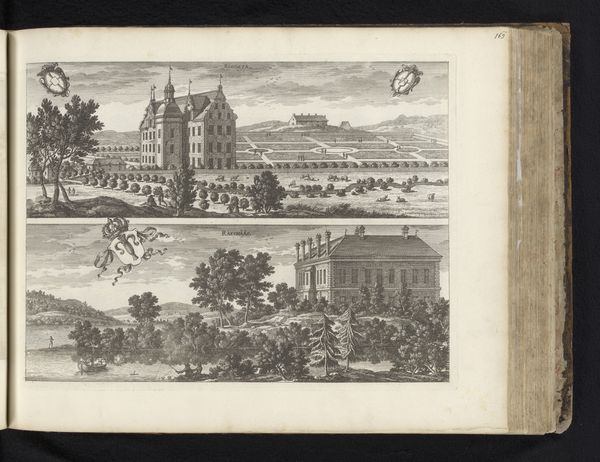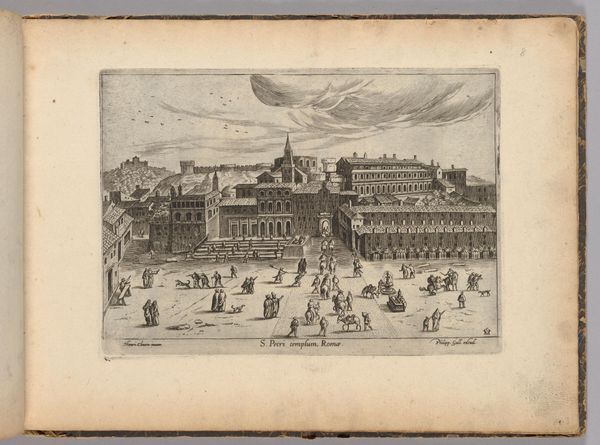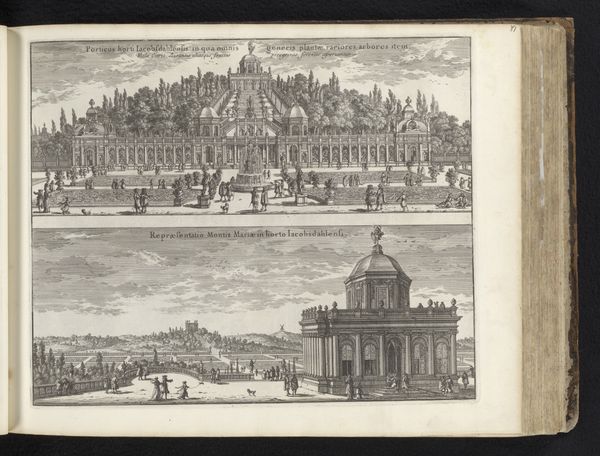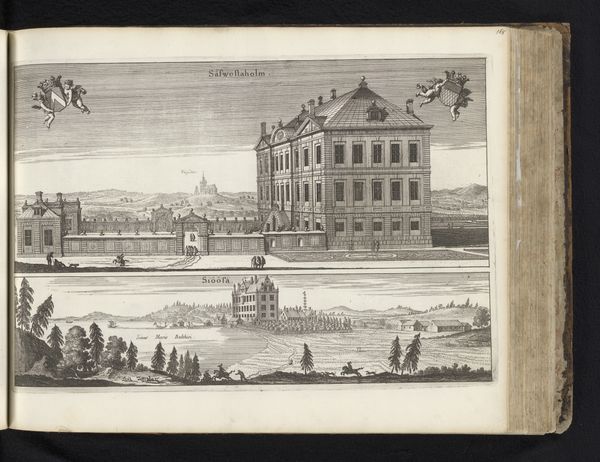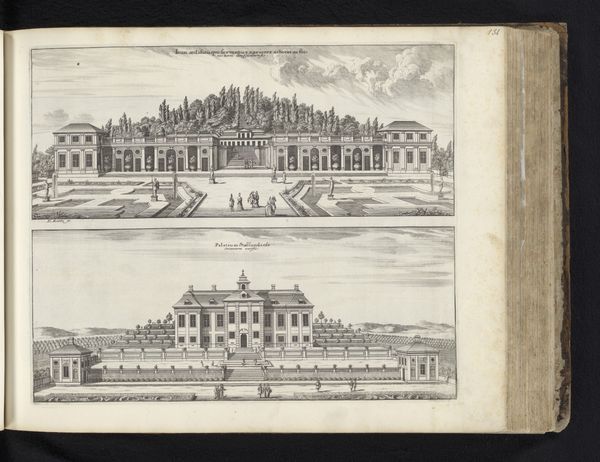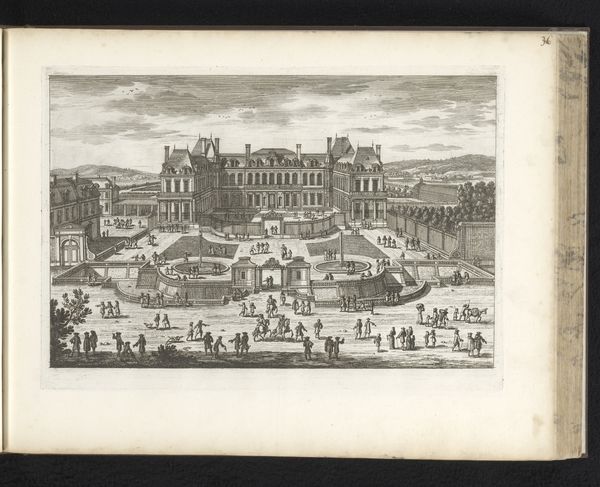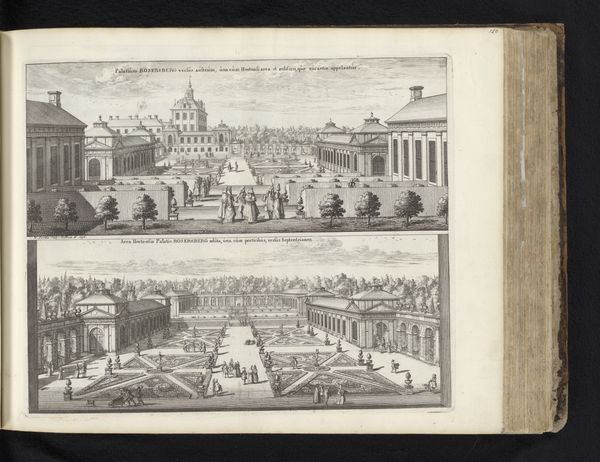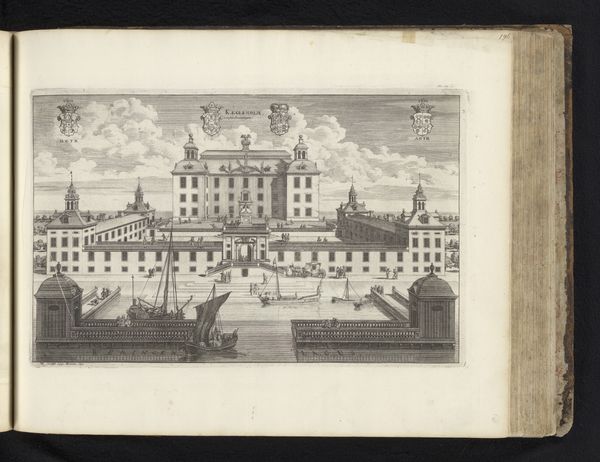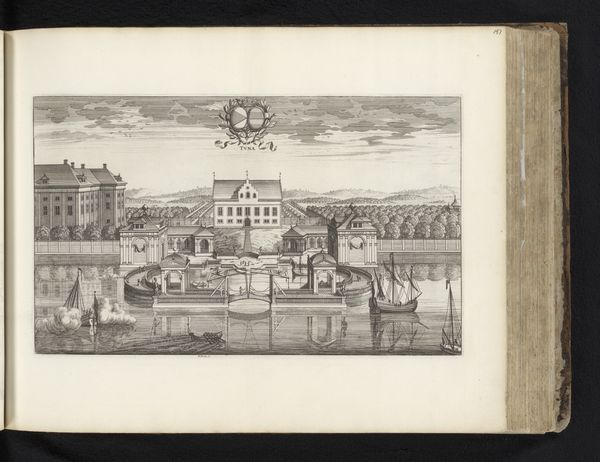
Gezicht op het kasteel van Eskilstuna en kasteel Gripsholm 1670 - 1674
0:00
0:00
print, engraving
#
baroque
# print
#
landscape
#
cityscape
#
engraving
Dimensions: height 265 mm, width 391 mm
Copyright: Rijks Museum: Open Domain
Curator: Here we have an engraving by Adam Perelle, likely created between 1670 and 1674, titled "View of Eskilstuna Castle and Gripsholm Castle." Editor: The composition immediately strikes me. There's a certain formality, almost like a carefully staged theatre set, especially in the arrangement of the landscapes, split into distinct registers. What feeling did the imagery conjure in you? Curator: The stark, almost clinical rendering underscores the power dynamics of the time. Castles weren't just residences; they were potent symbols of authority, patriarchal inheritance, and state control, carefully designed to impress and intimidate. And the landscaping is almost an assertion of power. Editor: Absolutely, there's an iconographic language at play. The precise landscaping evokes order and dominion. But, focusing on Eskilstuna Castle, do you notice the repeated shapes – rectangles, triangles and how this geometric framework lends the piece a structured feel? Curator: I do. And thinking about the viewer's relationship, notice how we're placed outside, almost excluded from the manicured perfection. This enforces the status of those inside the castles, reinforcing systems of exclusion prevalent then—gendered, racialized, and class-based. Editor: Let’s think about Gripsholm Castle on the lower half of the composition and focus on water. Bodies of water frequently embody reflection, or sometimes act as boundaries, thresholds. What might the psychological weight of water, in this context, have meant? Curator: The waterways likely reflect both commerce and strategic defense. But more symbolically, maybe the element of water could mean the potential instability for the Swedish monarchy; they could experience internal dissent. Editor: Certainly the choice of castles reflects a very particular political image, don't you think? It invites the onlooker into an idealized view of power. Curator: I concur. It makes you wonder about the counter-narratives: what perspectives were actively suppressed in favour of this polished, dominant vision? Editor: Indeed, a fascinating dance of historical narrative and symbolic articulation. Thank you for your incisive take, framing the cultural touchstones in such an approachable fashion. Curator: And thank you for shedding light on the visual and symbolic construction of the work, drawing my attention beyond my political science analysis to the memory and message of visual objects.
Comments
No comments
Be the first to comment and join the conversation on the ultimate creative platform.
